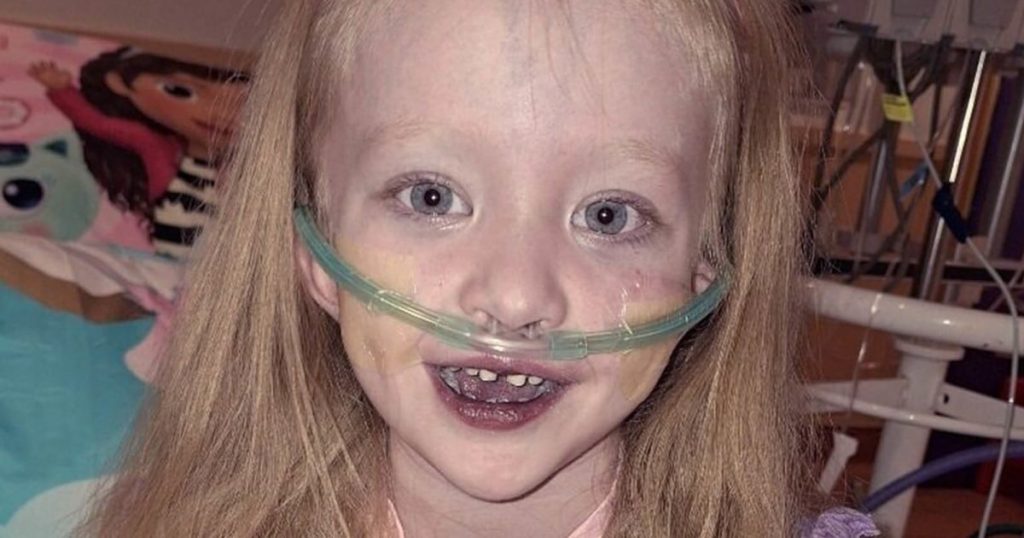When Harper Ryals turned 2 years old, her mom, Rebecca Newman, noticed that her daughter’s fingertips had turned blue and that she was struggling with her breathing. After a battery of tests, Harper was diagnosed with hereditary hemorrhagic telangiectasia (HHT), a rare disease that causes arteriovenous malformations (AVMs) in her lungs. Harper’s situation was made even more complicated by a unique genetic mutation that had never been seen before. Despite being completely healthy at birth, Harper’s condition deteriorated rapidly, requiring her to use oxygen to help with her breathing. The discovery of a large AVM in her brain added to her health concerns, causing doctors to consider a double-lung transplant as a potential solution.
As Harper’s health continued to decline, the family traveled to Texas Children’s Hospital in Houston to prepare for a double-lung transplant. On April 2, 2024, Harper was listed for the transplant after being air flighted to the hospital due to a respiratory infection. After spending 74 days in the intensive care unit, lungs became available for Harper’s transplant. Following the successful surgery, Harper’s oxygen levels improved, and she started to regain her natural complexion. While Harper still has the AVM in her brain, doctors are optimistic about her prognosis and believe that the transplanted lungs will provide better oxygenation for her body.
Harper’s condition, HHT, causes AVMs that prevent oxygen from reaching the bloodstream, leading to a lack of oxygenation in the body. Due to the widespread micro-AVMs throughout her lungs, Harper’s only option for treatment was a double-lung transplant. Despite the rarity of pediatric lung transplants, Harper was able to receive one successfully, allowing her to lead a more normal life. The family is now focused on Harper’s day-to-day health and the monitoring of the AVM in her brain, along with taking anti-rejection medication to maintain the health of the transplanted lungs.
Since her transplant, Harper has shown significant improvement in her overall health and energy levels. She is now able to participate in physical therapy and walk without the assistance of oxygen. Harper is excelling in her learning and development, demonstrating resilience and strength in the face of her health challenges. Although there are still risks associated with the transplanted lungs and the AVM in her brain, Harper’s family remains hopeful for her future and appreciative of the donor family’s decision to donate organs. Despite the challenges Harper has faced, her story serves as a testament to the power of belief and the possibility of miracles happening in the face of adversity.


